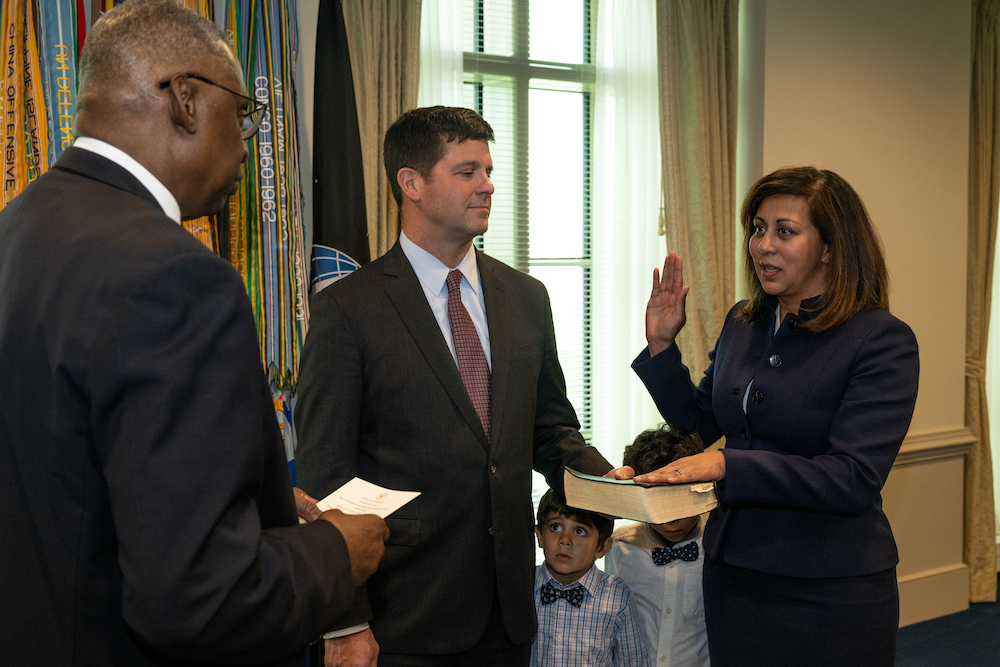What VA’s Boosts in Health Care Funding Mean for IT
Wide-reaching funding increases are impacting services that provide essential veterans care, including mental health and coronavirus research.

The Department of Veterans Affairs is increasing funding to various veterans health care and support programs slated to be implemented throughout 2021 and 2022.
As part of the VA’s focus on advanced medical care, the agency has allocated an additional $882 million toward medical and prosthetic research — an 11% annual increase that represents one of the VA’s most substantial year-over-year gains.
“These additional funds are going to be targeted to a number of areas, but the top three that I am thinking of are traumatic brain injury research, toxic exposure research and coronavirus research,” said VA Assistant Secretary for Management and Chief Financial Officer Jon Rychalski in a call with reporters.
This research push is being accompanied by increased funding for both IT and infrastructure modernization over the coming months, with VA pairing additional resources for its digital modernization push and the ongoing renovation of agency care centers.
“We’re going to take IT funding up to $5.5 billion, which is a 13% increase over 2021,” Rychalski said.
The allocation of funding toward renovation and new construction will coincide with that provided separately under the American Jobs Plan, likely amounting to a considerable push for facilities modernization across the entirety of the VA network.
“The construction program is the largest increase in recent years, both for major construction, which is a 22% increase, and minor construction, which is a 98% increase. We’ve plugged about $150 million into the minor construction, which is reflective of the challenges we have with our aging facilities and our aging infrastructure. This is separate and distinct from the American Jobs Plan that involves $18 billion, including $15 billion for major construction and $3 billion for minor construction,” Rychalski said.
Much of VA’s allocations toward both health services and facilities upkeep meets what Rychalski described as “a potential pent-up demand for health care services” that will emerge in the wake of mass vaccination and a decreased need for COVID-19 treatment.
“I think the commercial health care industry is projecting the same thing, and we’re actually seeing the leading edge of that. I think I’ve noticed in the last couple of months that the number of referrals for care is going up pretty dramatically. So as we’re coming out of the COVID, we’re seeing that there’s increased requests for services,” Rychalski said.
The VA is also committing funds to continue building out capacities that were rapidly deployed in response to the pandemic, including continuing investment in refining and expanding the availability of telehealth services.
“One of the most notable is probably telehealth … we’ve seen for veterans who have a hard time getting into a facility, they see no-show rates go down and satisfaction go up pretty dramatically. Obviously this is a program that’s going to endure, and we’re going to make a continued investment in that,” Rychalski said.
In tandem with these general investments in VA services, the agency is also allocating funding to provide care for underserved populations — including those with particular needs that may not have been adequately covered in the past.
“About 30% of new VA enrollees are women. We have about 580,000 women veterans in the system today, and we expect gender-specific care costs to be over $700 million in 2022. We put a lot of investment in gender-specific care in recent years, including hiring new providers and equipment. We’re continuing that with additional investments, and you’ll see the program office grow to $105 million. That’s an increase of over $6 million from 21, so it’s a high priority for us,” Rychalski said.
Additionally, the VA is continuing to dedicate resources for mental health services — with an especially substantial push in suicide prevention efforts.
“Preventing suicide has always been one of our top clinical priorities. We’re going to virtually double funding for this in 2022 to $598 million. The overall mental health budget will go from $12 to $13.5 billion in 2022. Looking at recent statistics, 29% of users of the VA system have received mental health care in a mental health care-specific setting, amounting to 1.6 million VA users. There’s high demand for this, so we are making a huge investment in it. A lot of that money — $142 million — is going to the new Veterans Crisis Line. We also expect to see between 122 to 154% additional investment in the veterans suicide prevention 2.0 initiative,” Rychalski said.
This is a carousel with manually rotating slides. Use Next and Previous buttons to navigate or jump to a slide with the slide dots
-

How Tech Enables Environmental Justice at EPA
The agency wants to eliminate bias and establish new tech standards to reduce greenhouse gas emissions.
39m listen -

The CAIOs Leading Responsible AI Development Across Government
Since the White House's AI executive order, federal agencies are in the process of naming chief artificial intelligence officers.
7m read -

How TMF is Helping Agencies Accelerate Tech Modernization
The program launched a new AI pilot to expedite TMF applications as agency leaders urge more to consider applying for funds.
4m read -

Defense Board to Pitch Solutions for Closing Tech Talent Gaps
Defense Innovation Board members cite need to modernize people management the same way government modernizes technology.
4m read




